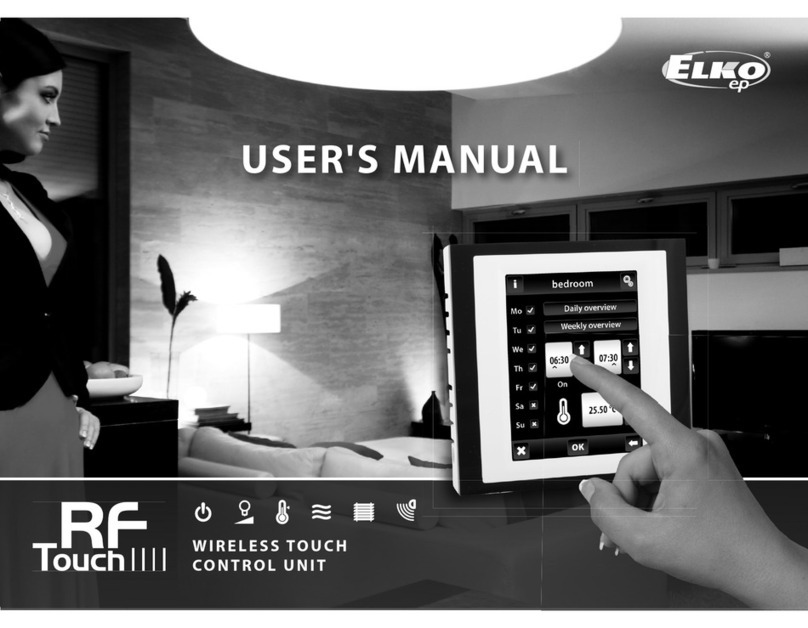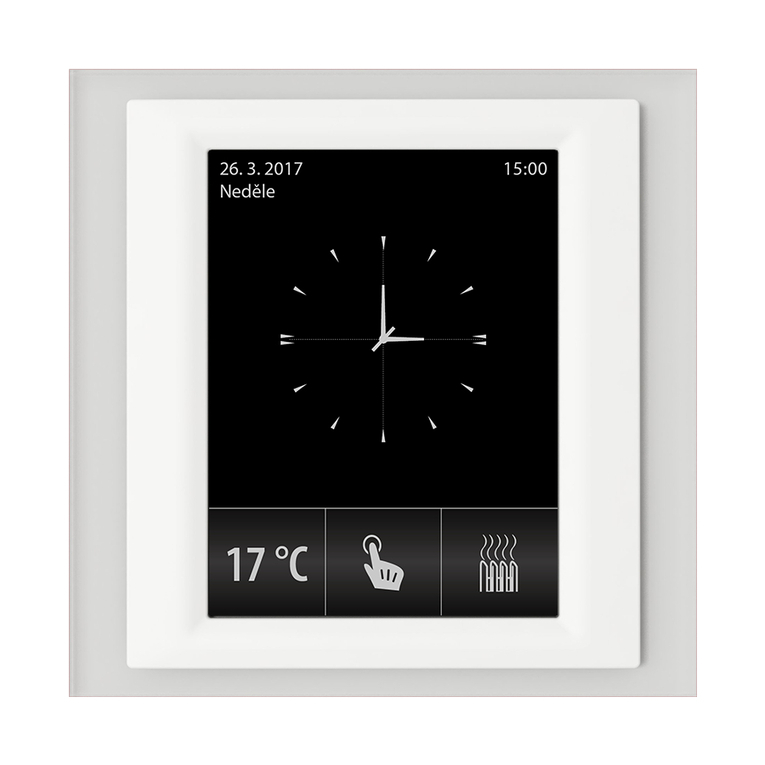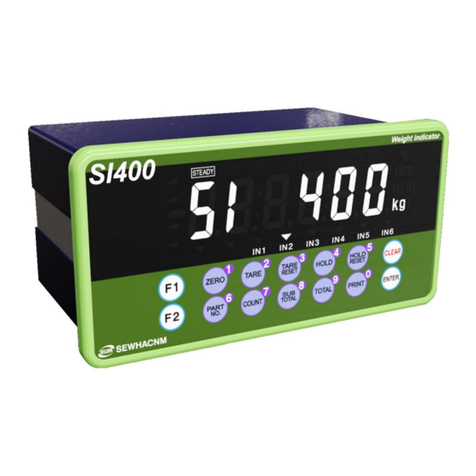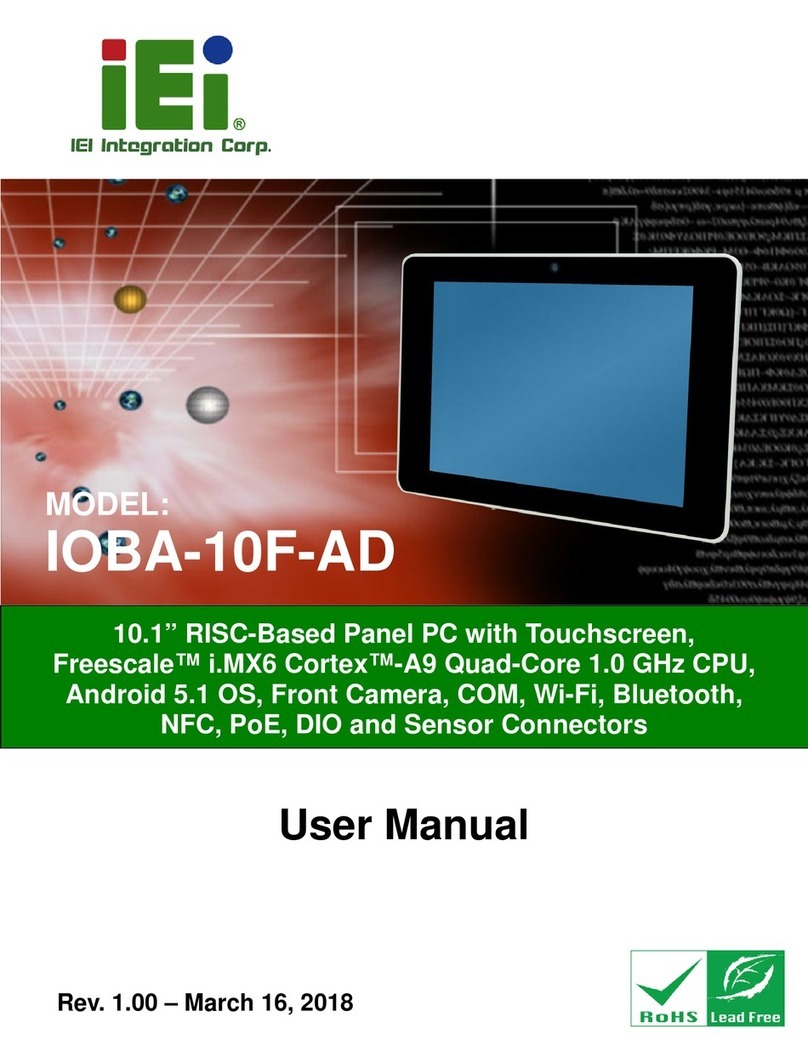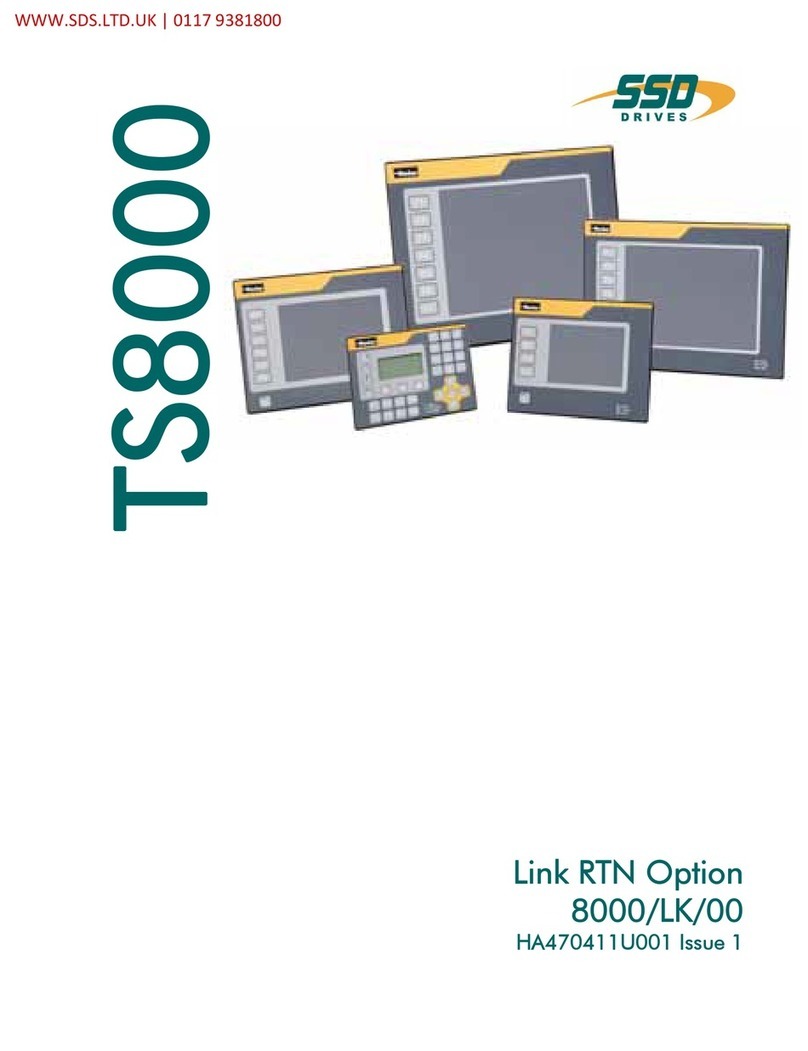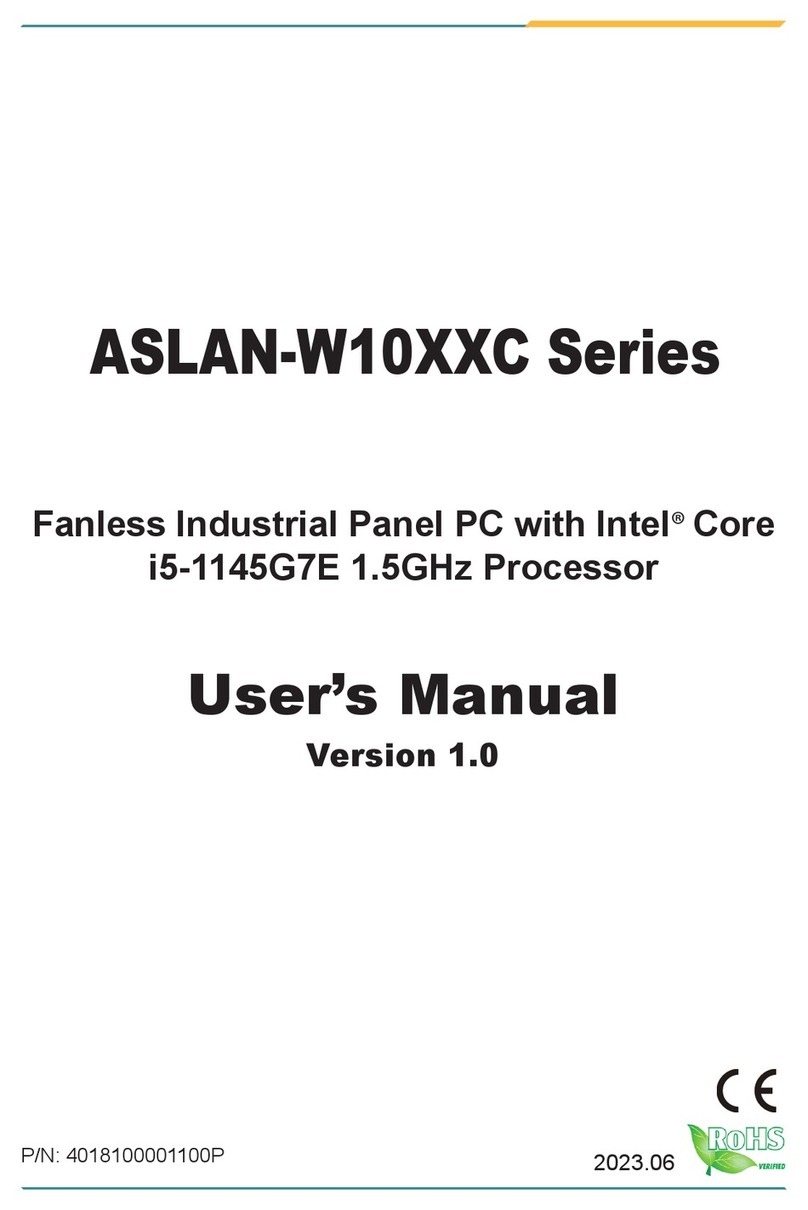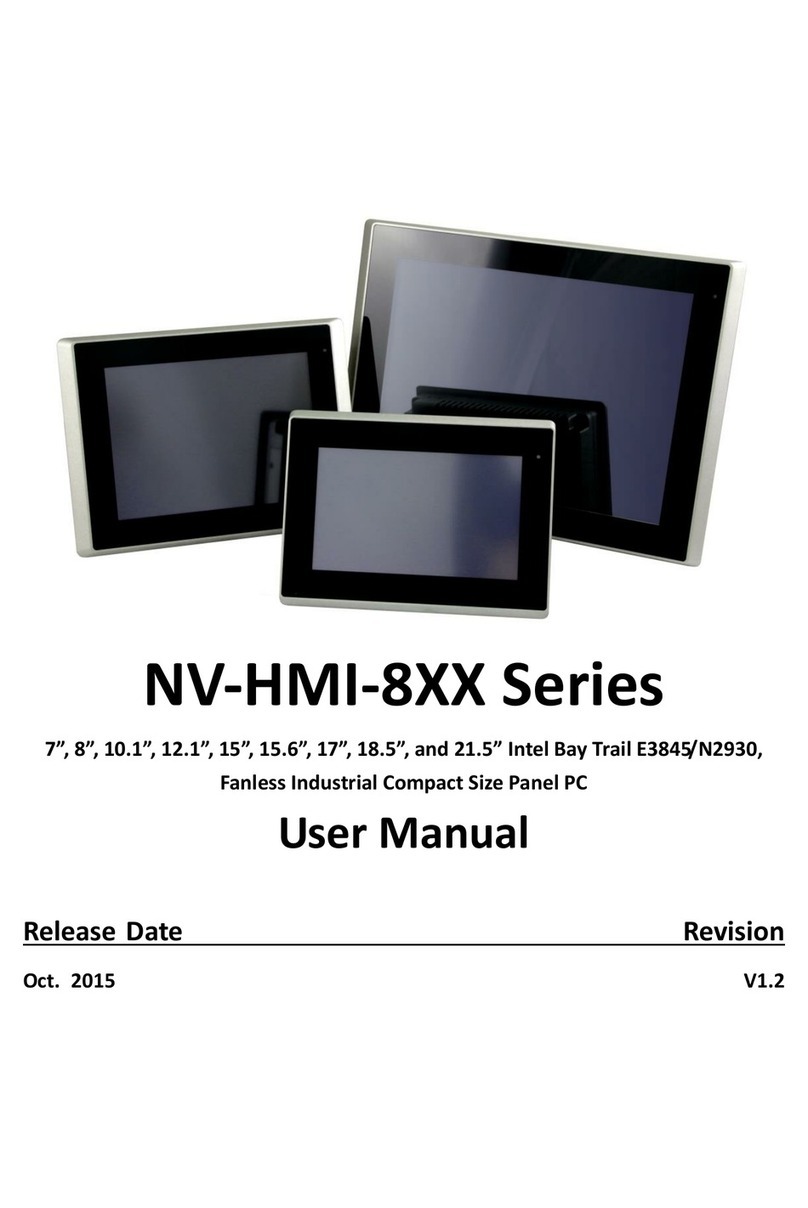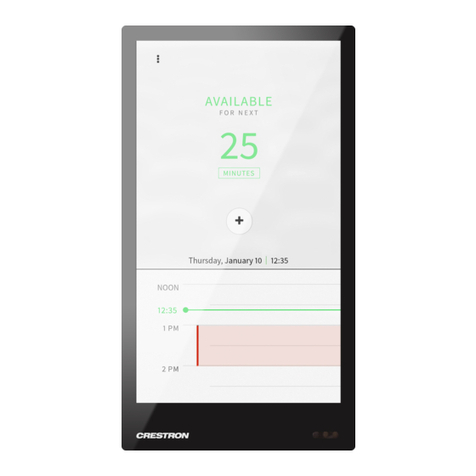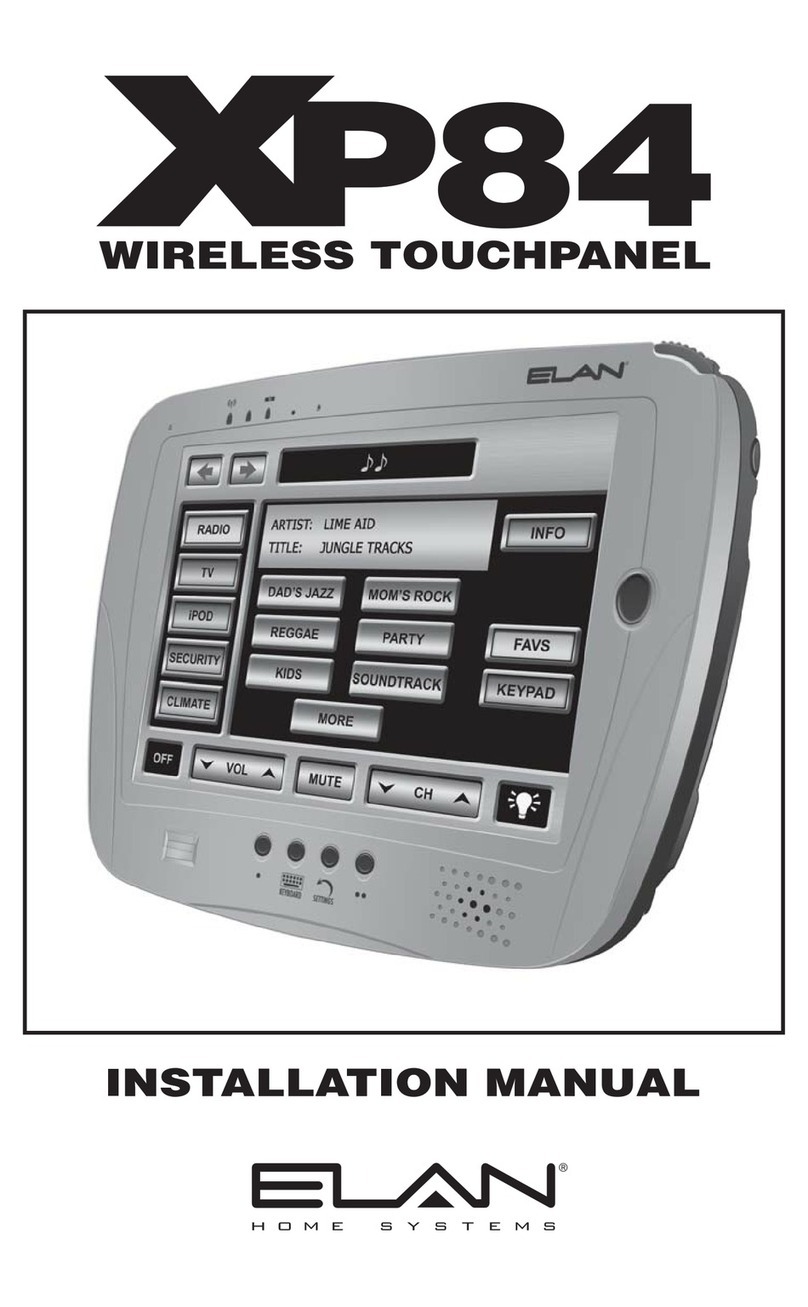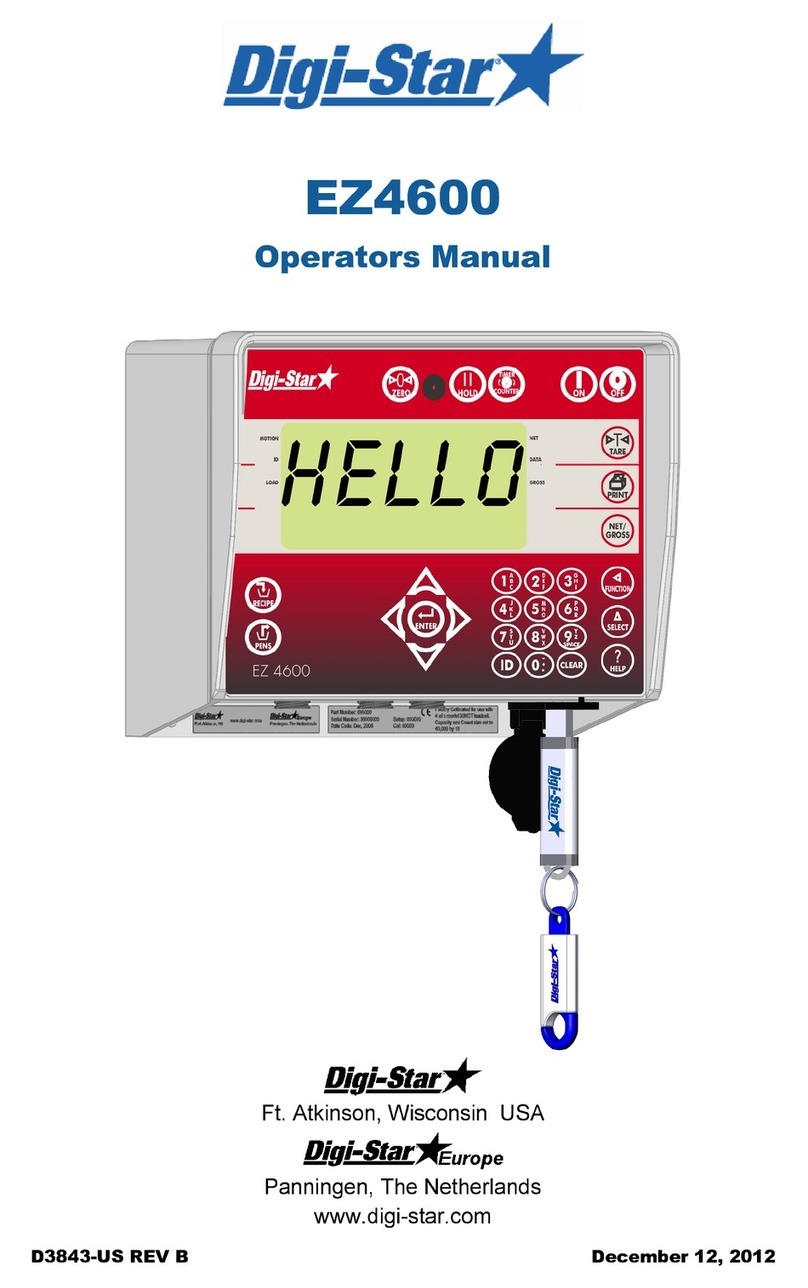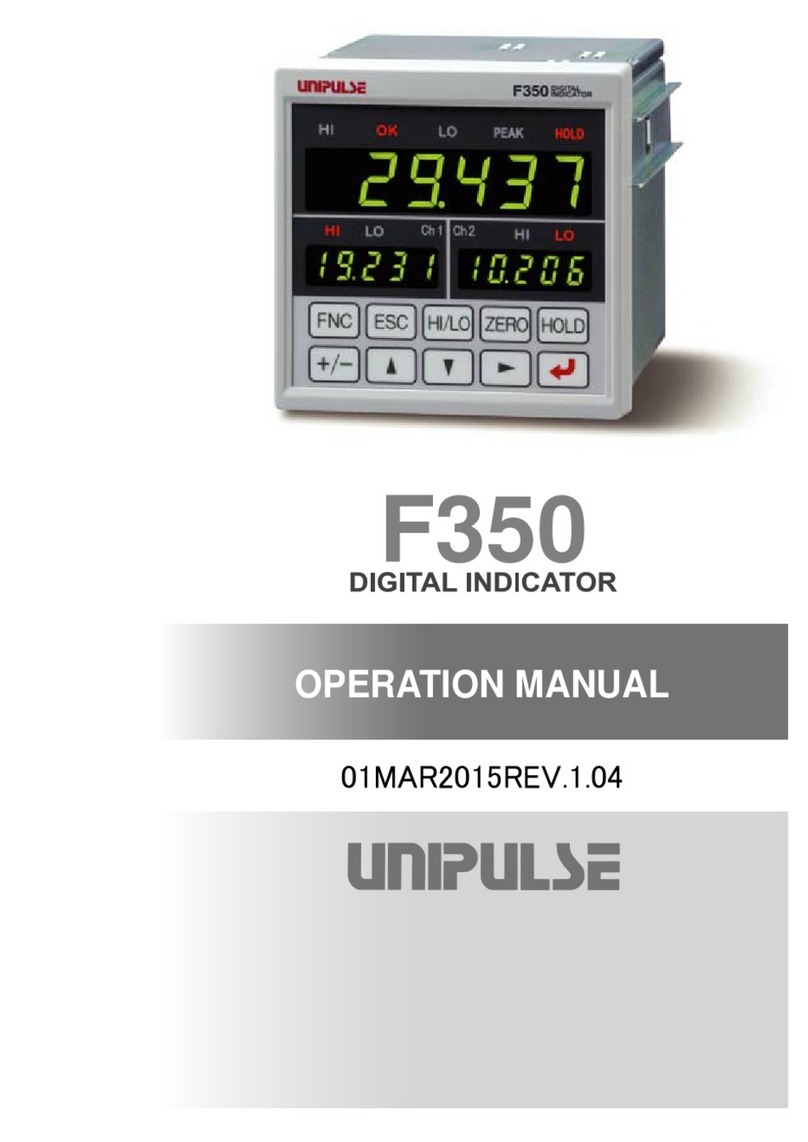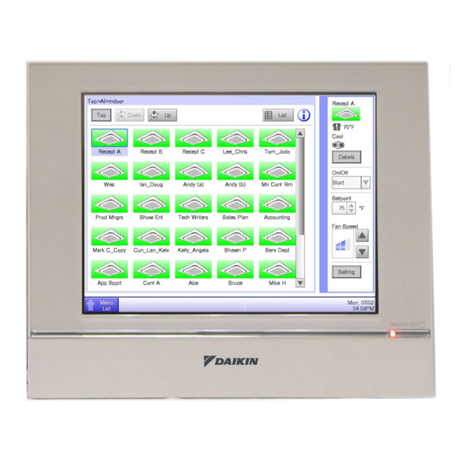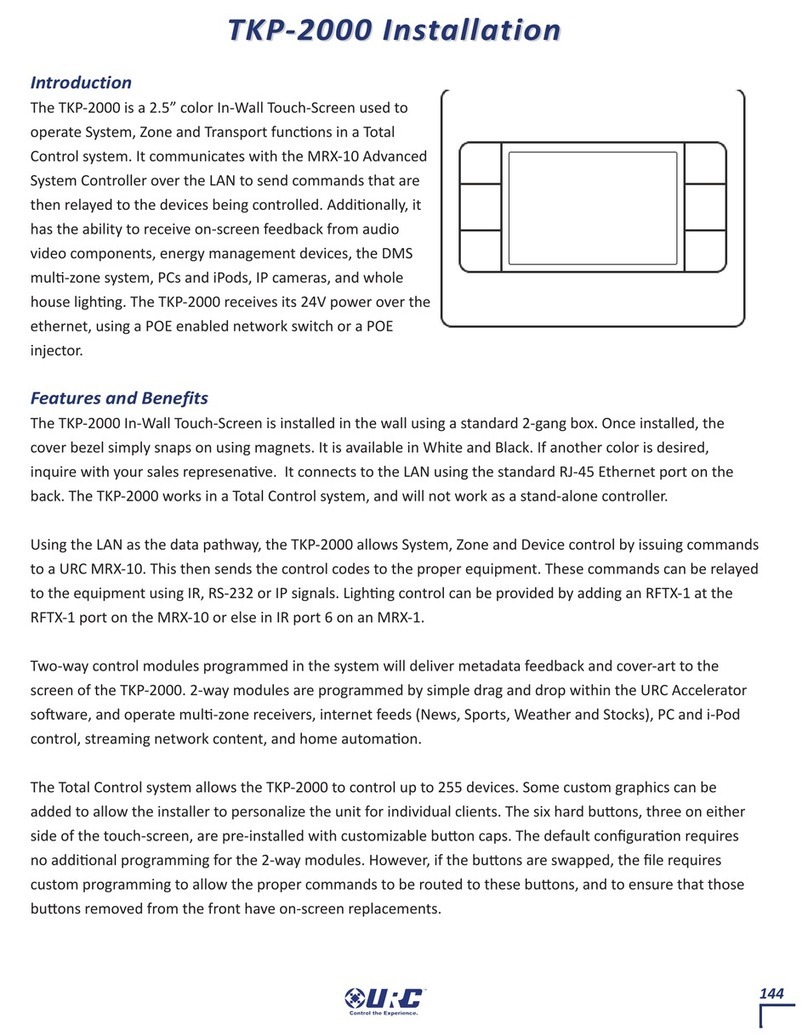Elko EST3 User manual

EST3
02-82/2017 Rev.1
1/2
12:30
A
Ab
bc
cd
e
e1
1
IN1
IN4
IN7
IN10
IN3
IN6
IN9
IN12
IN2
IN5
IN8
IN11
BUS
BUS
+
-
EST3
BUS+ BUS-
12
3
13
8
10
7
9
11
8 8
0 %
1
2
3
0 %
4
5
6
7
Elko smart touch screen
EN
Characteristics
- The control unit with touch screen EST3 is a suitable control element of the iNELS system in places
where it is necessary to control multiple devices. The unit replaces several drivers and enables
minimizing the number of switches on the wall.
- EST3 features a 3.5 „color touchscreen with an aspect ratio of 3:4. The basic display resolution is
240 x 320 pixels. The color depth of 16.7 million colors (24 bit color, True Color).
- Use the touch sensing surface to control configured buttons and symbols on the screen just
by a light touch of a finger. Individual symbols on the screen are in the „Press“ animated by the
associated output in the system.
- EST3 can have a combination of these screens:
- Buttons screen
- Temperature control screen
- Control RGB/RGBY/RGBW light sources screen.
- Selecting the default screen is possible from the iDM3 software.
- For screen of buttons one of four different matrixes buttons can be used - 2x2, 2x3, 3x3 and 3x4.
Matrix selection can be done from the iDM3 software. On the screen can then be used up to 12
buttons to control appliances or scenes.
- In the menu settings, directly on the EST3 component one of 48 prepared symbols (for control of
lighting, shading, scenes and other technologies) can be assigned to each button or the buttons
can be used to enter text (number of characters depends on the matrix of buttons and therefore
the size of the buttons).
- The temperature regulation screen enables coordination of the temperature of the selected
heating circuit in a range of ±3, ±4 or ±5 °C (in relation to settings in iDM3).
- The virtual wheel can be used for temperature correction, where you can drag your finger across
the screen to control the temperature by half a degree Celsius.
- The temperature correction can also be used instead of the virtual wheel symbols „+ „ and „- „ .
- EST3 units do not have an integrated temperature sensor, or terminals for connection to an
external temperature sensor. Within the iDM3 software, it is possible to assign any unit of heat
input system iNELS.
- The control RGB/RGBY/RGBW light sources screen allows you to comfortably control your RGB/
RGBY/RGBW light sources and adjust the luminous atmosphere as needed.
- For these RGB/RGBY/RGBW light sources , it is possible to use the controls on the screen to adjust
the color and brightness. It is also possible to directly set the RGB/RGBY/RGBW illumination light
source into white color.
- Located in the left upper corner of the screen are 4 indicators that can signal the status of any
logical input / output in the iNELS system.
- In iDM3 it is possible to define the displayed screen, the default screen, matrix of buttons, type
RGB/RGBY/RGBW and a correction range for the temperature control.
- In the settings menu directly on the device EST3 it is possible to select the menu language, screen
saver, sleep mode, brightness adjustment and symbols and texts for each button.
- EST3 are designed as LOGUS90 devices (EST3 however cannot be placed into multi-frames with
other devices in this design) and are intended for mounting to installation box.
The screenshots
Legend:
EST3 => settings menu => design
selection => 2x2 - input IN1- IN4
EST3 => settings menu => design
selection => 2x3 - input IN1- IN6
EST3 => settings menu => design
selection => 3x3 - input IN1- IN9
EST3 => settings menu =>design
selection => 3x4 - input IN1- IN12
1. Decrease brightness
2. Illumination in color based on RGB
3. Device Information
4. Increase brightness
5. Output ON/OFF button
6. Illumination in white
7. Button for moving between screens
8. Circuit temperature adjustment
9. Required temperature
10. Current temperature
11. Settings
12. Switch between modes: Heating -
Cooling - OFF
13. Switching control: AUTO, Manual
Connection

Made in Czech Republic
EST3
2/2
ELKO EP, s.r.o. | Palackého 493 | 769 01 Holešov, Všetuly | Czech republic | e-mail: [email protected]
TECHNICAL SUPPORT | E-mail: [email protected] | Mobil: +420 778 427 366 | Tel.: +420 573 514 276, +420 573 514 211 | Fax: +420 573 514 227 | www.inels.com
General instrucionsFunction
BUTTONS SCREEN
- Programming iNELS system functions on each button on the screen units EST3 is the same as
programming other digital inputs or events for input or button units.
- Buttons can be configured as well as other inputs in the system, both for short and also long
press (> 1.5 s).
- Buttons (icons) on the screen can be used instead of control outputs for visualization of one of
the digital outputs of the system iNELS. This is made possible by assigning button to the desired
output.
- In doing so, the button (icons) on the screen EST3 will become signal lamps (illuminated button),
showing the state of the associated output.
HEATING CONTROL SCREEN
- On the temperature control screen, the temperature of the selected heating circuit can be
corrected in the range of ±3, ±4 or ±5 °C.
- The virtual wheel can be used for temperature correction, where you can drag your finger across
the screen to control the temperature by half a degree Celsius.
- The temperature correction can also be used instead of the virtual wheel symbols "+ " and "- " .
RGB LAMP AND LIGHT SOURCE CONTROL SCREEN
- The RGB light sources control screen contains controls for managing the desired color and
brightness of the RGB light sources.
- RGB control screen function is set up so that the colors R, G, B are bound together and simulate
the signal level on analog inputs R, G, B and the resulting brightness of the lamp is linked to a
simulated analog input 0 to 100%.
- The RGB control display is comprised of several elements and buttons.
- A long press (touch) on the ON/OFF controls the central setting of RGB components and lamp
brightness - on/off.
- Buttons in the upper half of the screen are for setting the lamp brightness from 0-100%
in 5% increments (see adjustable brightness indicator in %).
- Buttons in the lower half of the screen are for setting the color comfort and accelerated
lamp RGB control. The buttons have a lock function. When pressing "white illumination“
button, the analog inputs are automatically set to the maximum value of individual color
components, which appears as a resulting white light at the RGB light source output when
these components are mixed. Then simply adjust the brightness intensity at the output. When
pressing (touching) the button "RGB-based color illumination“, the "white illumination“,
button automatically unlocks, and the "RGB-based color illumination“ settings button
locks..Now the values of analog inputs of individual RGB color components are preset
according to the set cursor in the color wheel of the RGB scale on the EST3.
ADDITIONAL INFORMATION
- Info gives information on the device and firmware version.
- Clicking the icon brings you to the settings menu, used to edit the EST3 (password to enter
Set t ings is 1111 b y d e f a ult).
- The icon returns to the buttons panel.
- The system time is displayed in the upper right corner of the screen.
- All inputs and outputs on the EST3 unit can be freely programmed and parameterized using the
iDM3 program.
Technical parameters
Display
Type:
Aspect ratio:
Visible area:
Backlight:
Touchpad:
Display:
Number of points:
Color Depth:
Power supply
Supply voltage / tolerance:
Dissipated power:
Rated current:
Connection
Connection:
Connecting conductors
prole:
Operating conditions
Operating temperature:
Storing temperature:
Protection degree:
Overvoltage category:
Pollution degree:
Operating position:
Installation:
Dimensions and weight
Dimensions:
Weight:*
colored TFT LCD
3:4
52.5 x 70 mm
active
4-wire resistive
3.5”
240 x 320
16.7M (24 bit color)
27 V DC, -20 / +10 %
max. 2 W
150 mA (at 27V DC)
terminals
max. 2.5 mm2/
1.5 mm2with sleeve
0 .. +55°C
- 20 .. +70°C
IP20
II.
2
any
installation box
94 x 94 x 36 mm
120 g
Warning
Before the device is installed and operated, read this instruction manual carefully and with full
understanding and Installation Guide System iNELS3. The instruction manual is designated for
mounting the device and for the user of such device. It has to be attached to electro-installation
documentation. The instruction manual can be also found on a web site www.inels.com. Attention,
danger of injury by electrical current! Mounting and connection can be done only by a professional
with an adequate electrical qualification, and all has to be done while observing valid regulations.
Do not touch parts of the device that are energized. Danger of life-threat! While mounting,
servicing, executing any changes, and repairing it is essential to observe safety regulations, norms,
directives and special regulations for working with electrical equipment. Before you start working
with the device, it is essential to have all wires, connected parts, and terminals de-energized. This
instruction manual contains only general directions which need to be applied in a particular
installation. In the course of inspections and maintenance, always check (while de-energized) if
terminals are tightened.
* Weight is listed with plastic frame.
CONNECTION TO THE SYSTEM, INSTALLATION BUS
iNELS3 peripheral units are connected to the system through the BUS installation. Installation
BUS conductors are connected to the terminal units to BUS+ and BUS- terminals, wires cannot be
interchanged. For installation of BUS it is necessary to use a cable with a twisted pair of wires with
a diameter of at least 0.8 mm, the recommended cable is iNELS BUS Cable, whose features best
meet the requirements of the BUS installation. Bearing in mind that in terms of all the properties
is it is possible in most cases also use the cable JYSTY 1x2x0.8 or JYSTY 2x2x0.8, however it
is not recommended as the best option. In the case of a cable with two pairs of twisted wires
it is not possible to use the second pair of the other for modulated signal due to the speed of
communications; it is not possible within one cable to use one pair for one segment BUS and the
second pair for the second segment BUS. For installation of BUS it is vital to ensure that it is kept
at a distance from the power lines of at least 30 cm and must be installed in accordance with its
mechanical properties. To increase mechanical resistance of cables we recommend installation
into a conduit of suitable diameter. BUS topology installation is free except for the ring, wherein
each end of the bus must terminate at the terminals BUS + and BUS- peripheral unit. While
maintaining all the above requirements, the maximum length of one segment of the installation
BUS can reach up to 500 m. Due to the data communication and supply of units in one pair of wires,
it is necessary to keep in mind the diameter of wires with regards to voltage loss on the lead and
the maximum current drawn. The maximum length of the BUS applies provided that they comply
with the tolerance of the supply voltage.
CAPACITY AND CENTRAL UNIT
It is possible to connect to the central unit CU3-01M or CU3-02M two independent BUSes by means
of terminals BUS1+, BUS1- and BUS2+, BUS2-. It is possible to connect to each BUS up to 32 units,
so it is possible to connect directly to the central unit a total of 64 units. It is necessary to comply
with the requirement of a maximum load of one BUS line - maximum up to 1000 mA current. When
connecting units which draw greater than 1A, BPS3-01M with 3A sampling can be used. It is the
sum of the rated currents of the units connected to the BUS line, other units can be connected
using the units MI3-02M, which generate further BUSes. These are connected to the CU3 unit via
the system BUS EBM and you can connect a total of 8 units via EBM BUS to the central unit MI3-02M.
SUPPLYING THE SYSTEM
For supplying power to system units, it is recommended to use the power source of ELKO EP titled
PS3-100/iNELS. We recommend backing up the system with backup batteries connected to the
source of PS3-100/iNELS (see sample diagram of connecting the control system).
GENERAL INFORMATION
To operate the unit, it is necessary that the unit is connected to a central unit CU3 series, connected
to the central unit of the system CU3, or to a system that already contains this unit as its expansion
to include further system.
All unit parameters are set through the central unit CU3-01M in the software iDM3.
There is LED diode on the PCB for indication of supply voltage and communication with the
central unit series CU3. In case that the RUN diode flashes at regular intervals, so there is standard
communication between the unit and BUS. If the RUN diode lights permanently, so the unit is
supplied from BUS, but there is no communication between BUS and unit. In case that RUN diode
is OFF, so there is no supply voltage on the terminals BUS+ and BUS-.
Other manuals for EST3
3
Other Elko Touch Panel manuals
Popular Touch Panel manuals by other brands
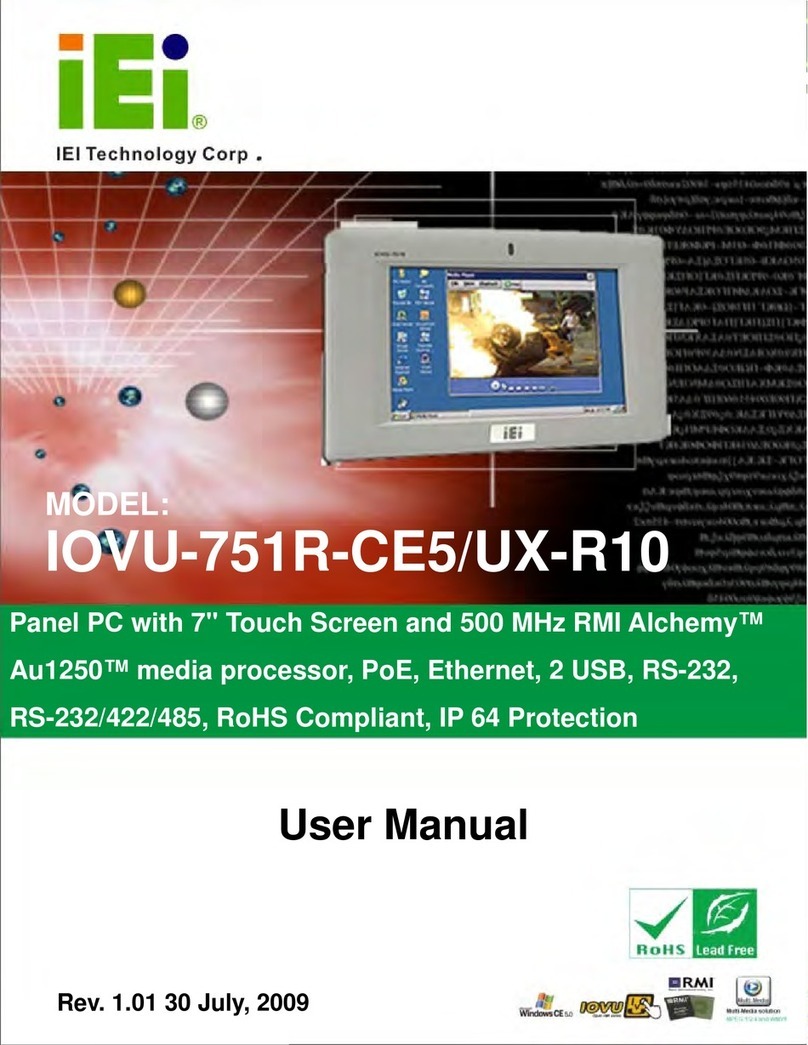
IEI Technology
IEI Technology IOVU-751R-CE5/UX-R10 user manual
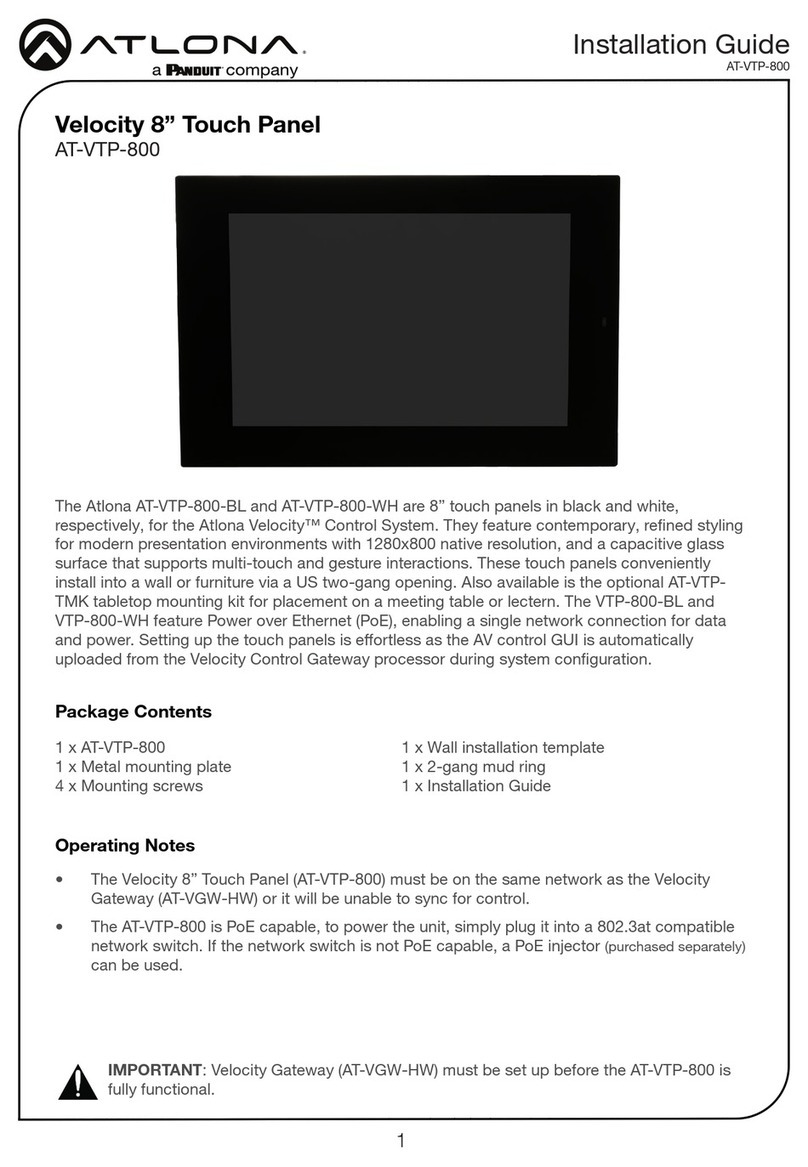
Panduit
Panduit ATLONA AT-VTP-800 installation guide
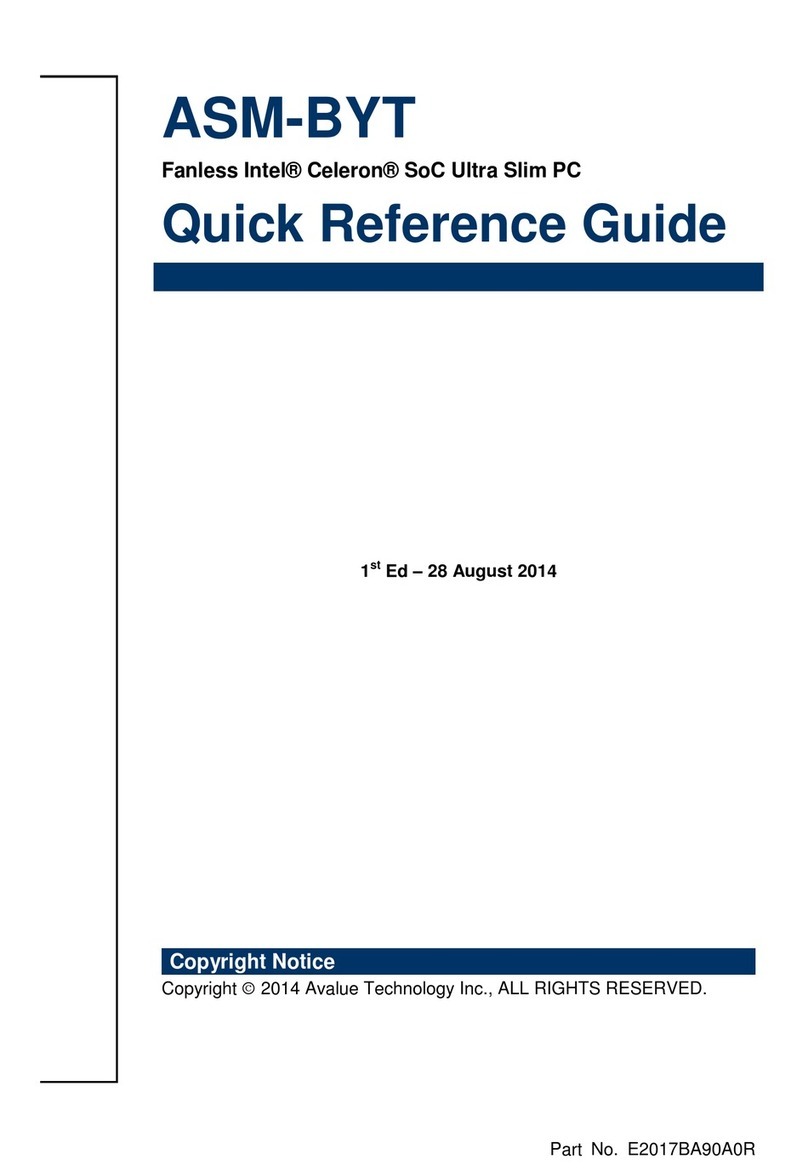
Avalue Technology
Avalue Technology ASM-BYT Quick reference guide
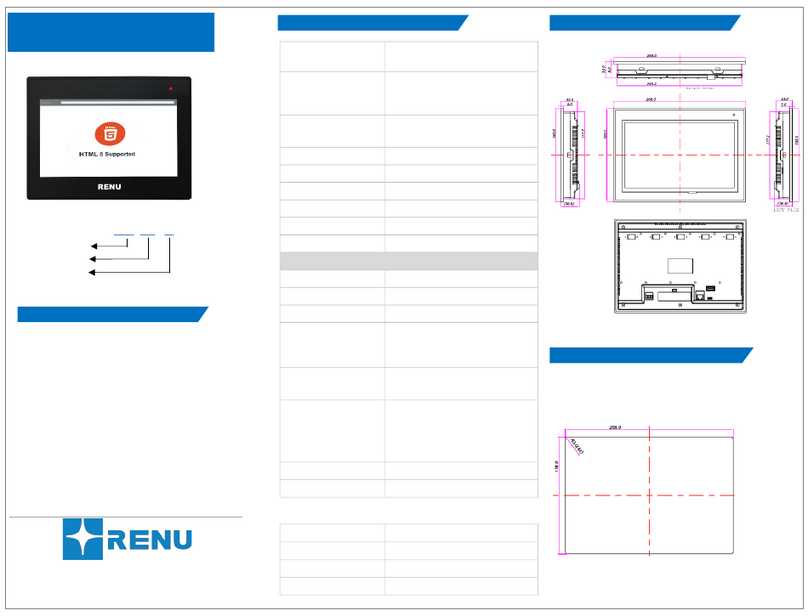
Renu Electronics
Renu Electronics WP6101TN Plus quick start guide
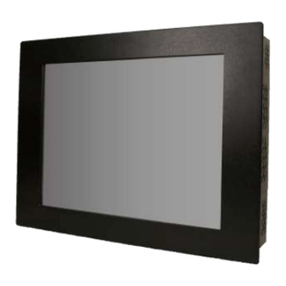
Aplex
Aplex APC-3519 user manual
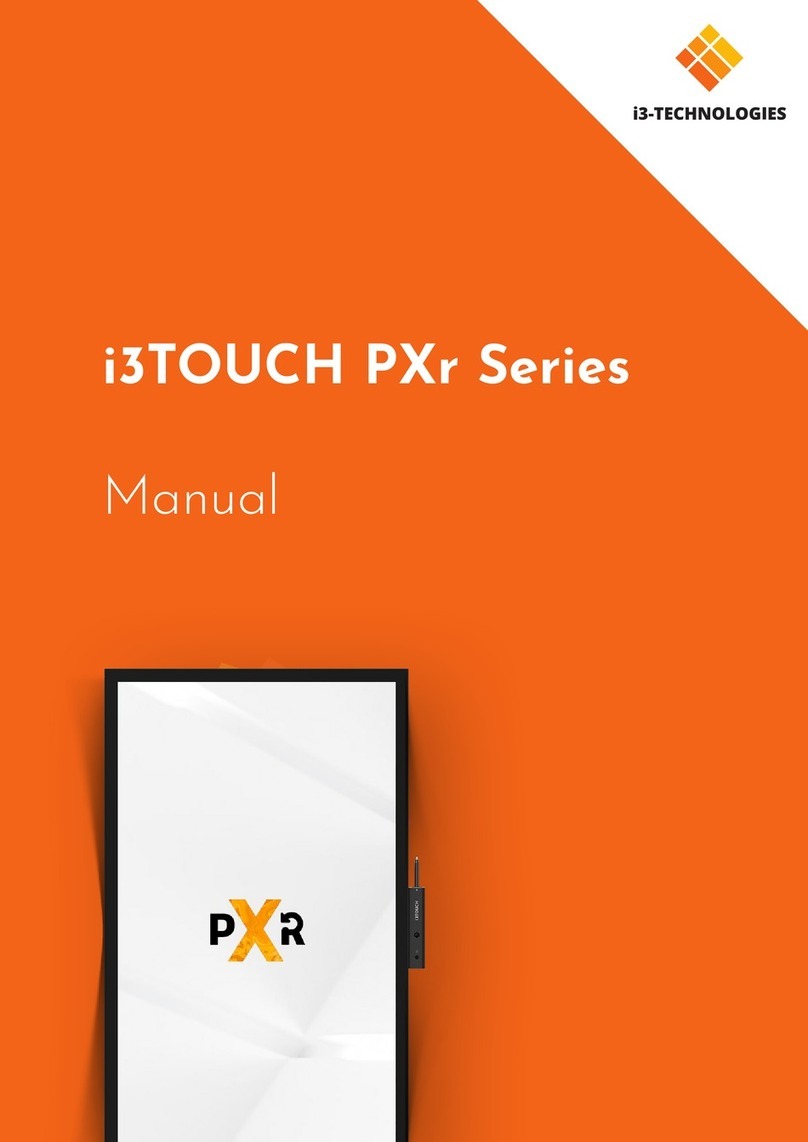
i3-TECHNOLOGIES
i3-TECHNOLOGIES i3TOUCH PXr Series manual
